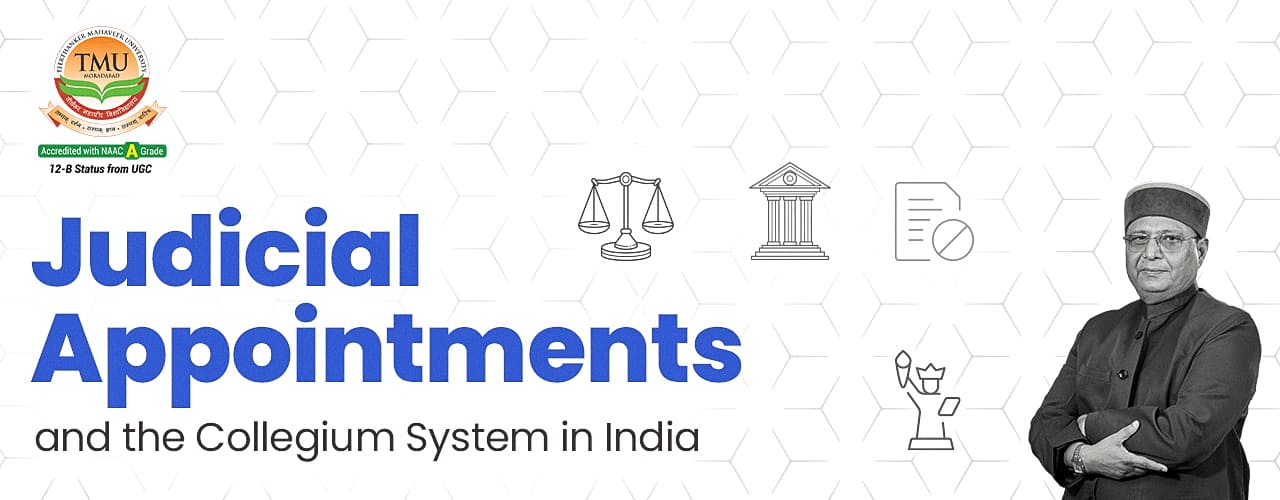Understanding the Debate on Judicial Appointments and the Collegium System in India
Table of Contents
In recent times, tensions between the Law Ministry and the Supreme Court have triggered a national debate around judicial appointments in India. The concerns are not new but have deepened, especially regarding the functioning, authority, and transparency of the collegium system that governs the appointment and transfer of judges.
This debate resurfaced strongly when Vice President Jagdeep Dhankhar raised objections, questioning the unchecked authority of a select few judges in judicial appointments and transfers. Should the judiciary’s internal discussions remain solely within the institution, or should the executive and citizens have a say too?
Evolution of the Collegium System
Before 1993, the Constitution of India gave the President the authority to appoint judges under Articles 124 and 217, with the consultation of judges of the Supreme Court and relevant High Courts. However, this changed dramatically following the Supreme Court's decision in the Advocates-on-Record Association vs Union of India case.
In this landmark case, the Supreme Court granted primacy to the judiciary in appointing judges, resulting in the formation of the collegium system—comprising the Chief Justice of India and a group of senior judges—tasked with recommending appointments and transfers.
Teerthanker Mahaveer University
Apply for Admission
Click Here To Apply for Admission
Key Features of the Collegium System
The Supreme Court later clarified through a nine-judge Constitution Bench (headed by then Chief Justice SP Bharucha) that the collegium should include the Chief Justice and four senior-most judges. Any nomination that does not secure support from a minimum of three judges should not proceed further. The decision was intended to preserve judicial independence and impartiality.
While the system has functioned for decades, it has faced increasing criticism due to its secretive nature, lack of transparency, and alleged internal favouritism.
Challenges and Criticisms
Over time, it became evident that decisions taken under the name of the collegium were often made by a few influential judges, ignoring the views of others. The lack of transparency has prevented a healthy public discourse on such a vital matter.
Further controversies arose when recommendations made by former Chief Justice MN Venkatachaliah in 1998 were ignored by the executive, leading to tensions between the government and judiciary.
Additionally, the lack of accountability has allowed questionable appointments to go unchallenged. Judges with serious allegations against them, such as Justice Soumitra Sen and Justice Dinakaran, continued in office without significant action, exposing the flaws in the current system.
The Way Forward: Need for Reform
Judges are not just members of the judicial fraternity; they are public custodians of constitutional rights. Therefore, appointments to such crucial positions cannot remain an internal family affair of the judiciary.
To restore faith in the system, it is essential to introduce reforms in the collegium structure. Pre-appointment background checks, performance evaluations, and wider consultations are necessary steps. India could take cues from the United States, where the Senate Judiciary Committees conduct public hearings, allowing citizens and stakeholders to weigh in on judicial nominees.
Such a reform would uphold the principle of merit and ensure the selection of individuals with proven integrity and capability.
Conclusion
The collegium system, though established to protect judicial independence, now calls for introspection and reform. A balance must be struck between secrecy and transparency, independence and accountability. A reformed system will not only strengthen democracy but also enhance public confidence in the judiciary.















